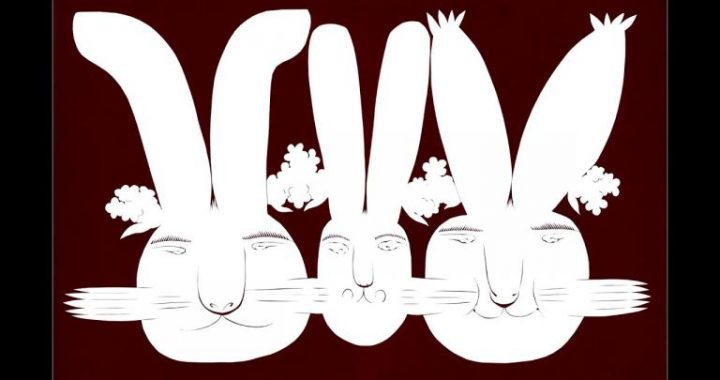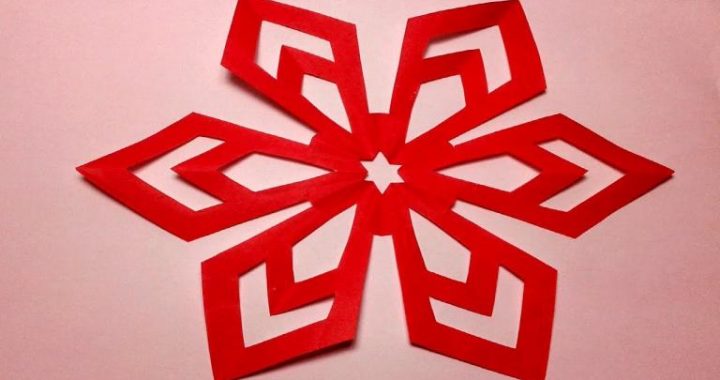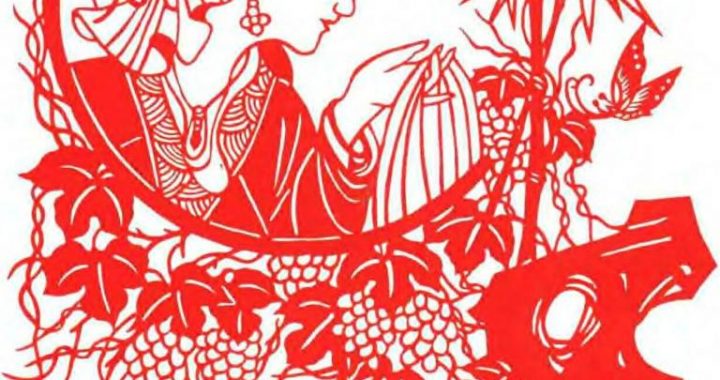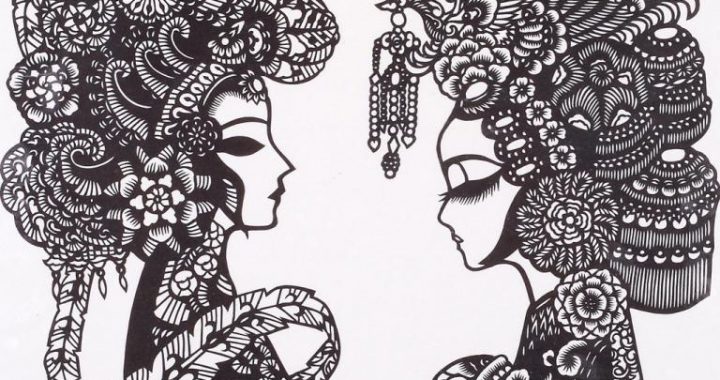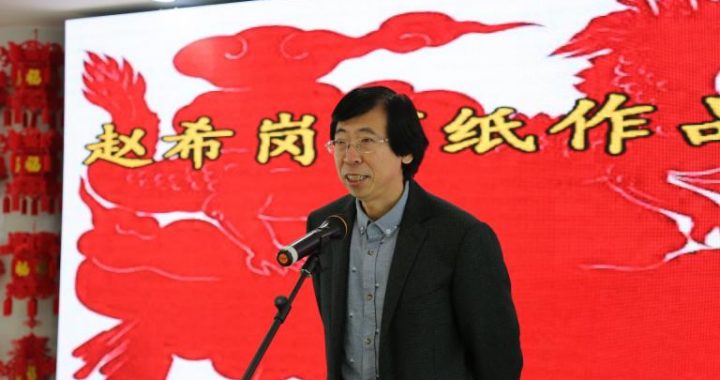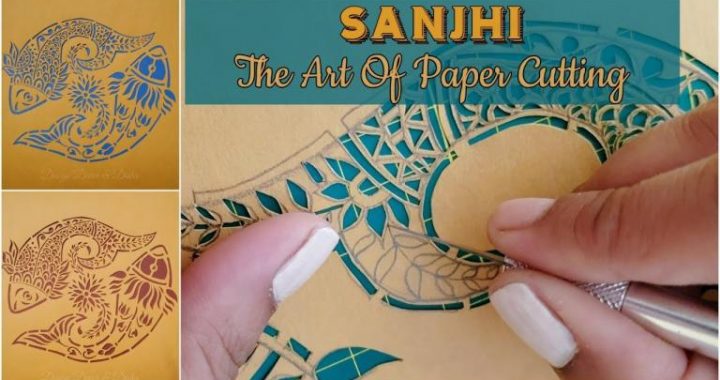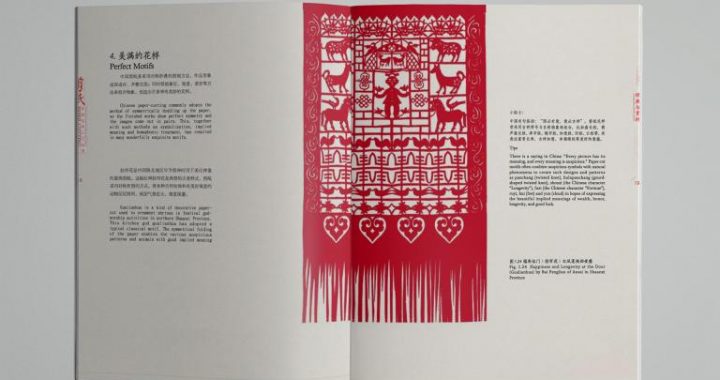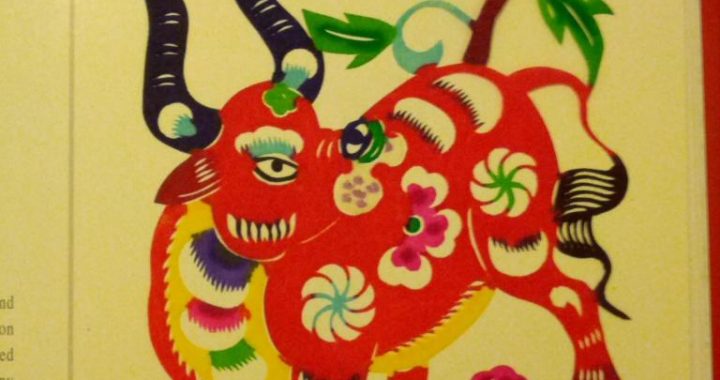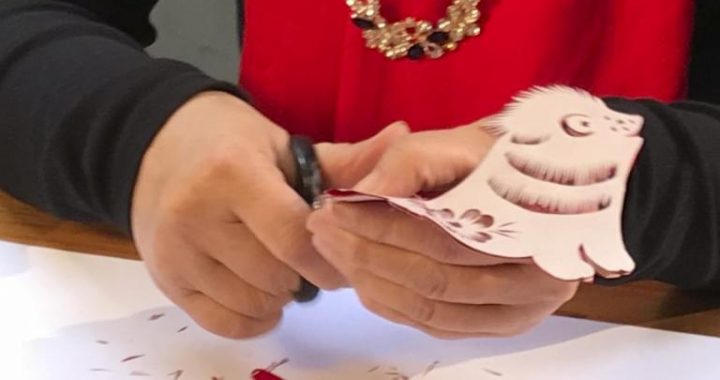Leather Silhouette
6 min readTelling stories of the ancient times over a curtain frame; playing music and beating drums under the stage light; the music conveys joy and sorrow, partings and reunion in life; and the show reveals the crafty and the evil in the past. Three feet of raw silk makes the show, jokes and humor slip through figure tips; one voice tells stories of a thousand years and two hands display the battle ground. One piece of leather creates joy and sorrow, laughter and anger; and a profile contains royalty, betrayal, virtue an evil” This is true portrayal of the leather silhouette which combines in one literature, theatre, music, and fine art. The shadow show props and characters are the key areas of creative art Chinese leather silhouette show has numerous names featured by its locality. It is the”Shadow show” in Shaanxi; “Luanzhou shadow” in Hebei; “Donkey leather silhouette”in Northeast China; “Light shadow show” in Sichuan, “Leather Nannan”in Guangdong; “Whipping monkey”or “Monkey show” in Fujian and Taiwan. Leather silhouette and puppet shows are the earliest and most popular stage plays in Chinese puppet theatrical art. At all custom occasions such as holidays and festivals; flower fairs or temple fairs; spring worship and autumn requital; chasing away disasters and inviting fortune; red and white celebrations; child birth and career promotion; a stage is set up in the village to put on shows, singing and dancing.
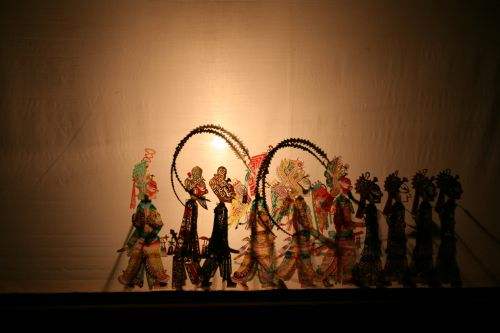
Theatrical troupe is usually headed by someone who owns the costume; or a family troupe consisting members of the same household. Some shows are series shows that can go on for 7 or 8 nights, even as long as two weeks; others are single show or the highlights from series shows. Some troupes would set up puppet shows during the day and make shadow shows at night. There is always a pre-show episode to salute gods. On wedding ceremonies, celebrating child birth or first full month of the newborns, the show on will be “sending off proliferation fairy; birthday celebration for the elderly is the “three stars-fortune, wealth and longevity;” erecting roof beam for new houses is “Lu Ban carpenter show;”and at Rev. Guan’s temple fair or at prayer time to seek protection against disasters and pestilence, it is “Rev. Guan Yu, the all-time evil conqueror.” The size of shadow show troupes average from5-8 members, some with only two. Shadow show actors are still involved in field work. They travel around the neighboring villages when field work is idle, carrying costumes on their shoulders, or on donkey backs, to set up temporary stages. Traditional screen is a wooden frame about one meter high by two meters wide, covered over with white sheet. It is called the “shadow window”or the “bright spot”by the folks. With oil lamps hanging over the screen box, actors and actress manipulate the post of silhouette figures against the cloth screen window, singing along to the music accompaniment. With brilliant skills and amazing techniques, and through those shadow figures, stage settings and costumes cast on the screen by the lamp light, they present various roles and plots with vivid performance. Action scenes have intense fighting between warriors, reining horses before falling swords; drama show is unfolded with genuine emotions, singing in tearful voices at highlights. Audience under the stage is deeply captured by the plot and the performance.
Process of making leather silhouette show figures (Huaxian County, Shaanxi) An action leather silhouette show put on by Luannan leather silhouette troupe, Hebei.

Back stage scene of a drama shadow show with mostly singing and story telling, by a troupe in Gansu.
Traditional shadow figure is about 35 cm high, mostly made of cow skin(Shaanxi, Shanxi, Gansu, Qinghai, Henan, Hubei Sichuan and Yunnan), or donkey skin (Hebei, Inner Mongolia, three provinces in Northeast, and Shandong), and painted goat skin (Zhejiang and Guangdong). In Jiangxi and Hunan, it is made with carved paper sandwiched with color fabric. Most leather silhouette artists were experienced senior artists with specialties handed down in the family. They went through complicated process from leather selecting, processing, engraving, coloring and painting, to sewing and assembling. After that, they added a neck sheathe to insert wig to complete the 11 movable components (the head, the upper and lower shoulders, the upper body and the lower body, and two legs) before assembling them onto three bamboo sticks, one fixed and two movable, for the neck and two hands. Depending on the role, one figure could have as many as four sets of wigs. For a large show, with male, female, painted face and clown four categories of some 80 figures, it might have as many as four hundred wigs. In addition, they carried almost everything from tables and chairs; vehicles and horses; general’s tent, carriage and boat; palace and chambers; Buddhist and Taoist temples, to the background stage arrangement for the sky, earth and water. With these costumes, they could put on some 100-200 different shows.
Cattle hide leather silhouette introduced to Egypt from China during the Yuan Dynasty. Photo taken at Berlin Museum, Germany.
Cattle hide leather silhouette from Hubei(Qing Dynasty).
Regular shadow figure head is full profile, known as”half face.”Clown and villain sometimes are given half profile, called “70% face;,” fairies and Buddha are shown with full face. Shadow figure’s body is mostly 70%. Carving of shadow figures is very particular. It requires using knife with ease and making turns smoothly. The hollowed-out facial outline, in particular, requires an exceptional skill in craftsmanship, making lines as thin as “stretching wires, “sharp and translucent. Body figure using chisel engraving has a variety of designs, including snow flake, character “Wan” shape, wealth and fortune, wintersweets, fish scale, pine needle and star eyes, etc. Leather silhouette coloring is usually bright and transparent, mostly in black, red, yellow, and green. Music accompaniment are four string and south string instrument; bowed instrument; four-string moon-shaped instrument; drum; gong; flute; hand allegro; and horn. Based on geographical localities, each place has its own unique style and characteristics in shadow figure design, music and instrument.
China boasts a long art history of leather silhouette show, originate in Chinese Taoist’s astrology, in the Han Dynasty (206 BC-220 AD). The earliest record found was a moving love story. Having missed his deceased wife Lady Li, Emperor Han Wudi invited a necromancer to dinner, asking him to call back Lady Li’s spirit. The necromancer put up curtains at night, lit candle light to create shadow figures.
Seemingly the emperor saw Lady Li’s face again and he missed her even more.
The Tang Dynasty (618-907), along with the introduction of Indian Buddhism in the late years of the Eastern Han Dynasty, Buddhists set up altars for night seminars along the Silk Road and Chang’an, the then capital of the Tang Dynasty and its political and economical center, preaching Buddhist scriptures and telling stories in the form of chanting and singing with illustrations of series of pictures. Chinese Taoist also preached Taoist scriptures and Taoism, following the Tang Dynasty’s Taoist melody and instrument, with simple rhythmic accompaniment. As of today, shadow shows in western Shaanxi, eastern Gansu and southern Shanxi still follow the same way of chanting and storytelling. Buddhist and Taoist scripture-preaching with illustration later developed into using paper partitions and light to create shadows on the paper along with storytelling. In Huaxian County, Shaanxi Province, shadow show is still referred to as “storytelling behind the paper partition. Huaxian County was known as “bowl tunes,” which was also named after the clock-like bronze percussion instrument from Indian Buddhist.
